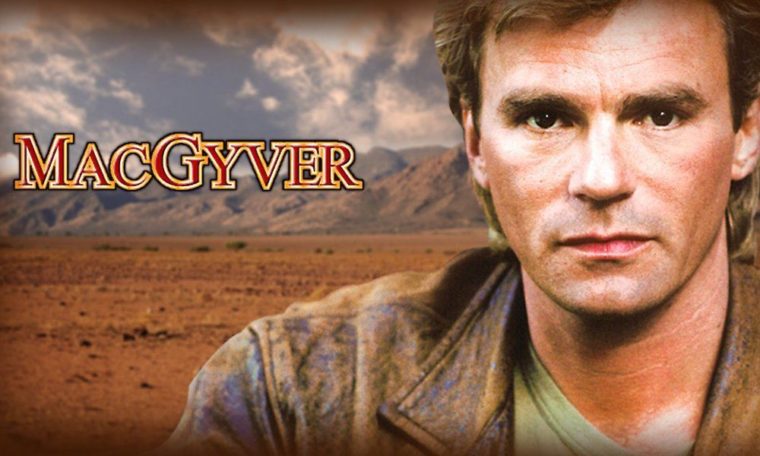Picture this… We’re watching a movie where our hero is trapped and facing absolute doom with no obvious way out. We begin to feel anxiety and a deep sense of urgency for an escape. We also do something else… our brains are working fast on a solution for the hero. This can’t be the end! We love to see that moment when the hero’s eyes get laser focused and he says, “I’ve got an idea. Hand me that lamp!”

Yes! The hero escapes! If you’re old enough to remember… MacGyver or Indiana Jones, you remember all the close calls and the entertainment in the amazing adventure.
Metaphors Help with Understanding
Last week we discussed metaphors to help with understanding. We discussed how our brains work to make an abstract idea more concrete. For example, imagine a red shoe box sitting on the table. That’s easy for you. Now imagine discipline.
Discipline imagined may have taken a little longer, but I’m sure it was still fairly simple for you. Now my next question, “What did you imagine for discipline?” I bet we’ve got 100 different mental images if we compare everyone’s picture to each other. Did you picture a military officer standing at attention? A person meditating? An athlete in the gym at 5AM?
This is the tricky part for the leader attempting to get the team on the same page. When we present abstract ideas without a common metaphor, everyone’s picture is different. So as the speaker, we need to use metaphors to create the same picture of understanding.
But there’s still a problem with the metaphor… it doesn’t give us a reason to do anything.
Metaphors Don’t Create Movement
Metaphors help with understanding and that is great! But, they don’t necessarily give the audience a reason to do anything. To create movement in the audience, the speaker needs to move from simple understanding to making a decision about the future. Creating movement from understanding requires another tool… stories.
I once had a student ask about where analogies fit into all of this. I couldn’t help but respond with… “Metaphor is to understanding as story is to movement… How’s that for an analogy?” See Mrs. Sheets (my 8th grade English teacher)… I was listening! Sorry to digress… English Teacher humor. 🙂
Stories Create Movement
The best stories take you on a journey. That movement created by the author is done through character decisions full of risk. The characters in the story are placed in a situation where change is either required or desired. For any change to take place, a decision must be made. All decisions with a risk tied to them are compelling to the audience because there’s a potential consequence or reward.
When we see the need to make a decision, we begin to weigh the consequences of action vs. inaction, as well as weighing the different types of action we could take. It’s a simple formula really… we look at what we have to gain versus what we have to lose… and passion defines what we care about.
Finding Your Audience’s Purpose
We’re all unique individuals and we all have our own personal preferences and passions. With our passions, we might think about our passion for our spouse, for reading, for ice cream, for gardening, for drawing, for a sport, for jogging, or for a good steak or sushi.
My guess is that not everything in that list is something your passionate about, but you can replace any of those items with something you are passionate about. We’re all different when it comes to personal passion. This is why tapping into passion, as a speaker, can be difficult. Everyone has a different hot button.
If you have a homogenous group as your audience (e.g. the Kayaking Club of Central Texas) you could tap into kayaking and the outdoors and probably strike a chord with everyone in this audience. They share this common passion. But if your audience is not so alike, you’ll be challenged to get them all on the same page with passion. However, purpose tied to a core value is much better for uniting an audience.
Passion will eventually lose to Purpose
As I pointed out in a previous blog post, purpose will always beat out passion. This is because passion is related to personal preferences, but purpose is related to core values, which are much more common across us all. So as a speaker, you need to look for ways to tap into purpose with your audience. One of the best ways to communicate purpose is with a story. Stories with purpose demonstrate “the why” behind the characters’ actions.
This is where stories will always beat out metaphors. The metaphor will help someone understand a concept, but a story will provide a purpose for taking action!
What should we do now?
Help your audience understand with a metaphor, but don’t forget to give them a story to provide the purpose (the why) for taking action!
Time to make a decision…
Russ
Let’s connect…
iSpeak teaches workshops on Professional Selling to help sales leaders gather the most important data and then use that information to create the right message. Are your sales presentations closing eyelids or deals?
Russ Peterson Jr. is the co-founder and Managing Director of iSpeak, Inc. – An award-winning professional development training company. Russ is a speaker, international trainer, and published author on Professional Sales Communication and Business Communication. He delivers workshops, keynotes, and personal communication coaching services to business professionals in the US and around the world. His leadership blog assists leaders in giving voice to their vision. You can connect with Russ directly through Twitter, Facebook and LinkedIn.



Please note: I reserve the right to delete comments that are offensive or off-topic.